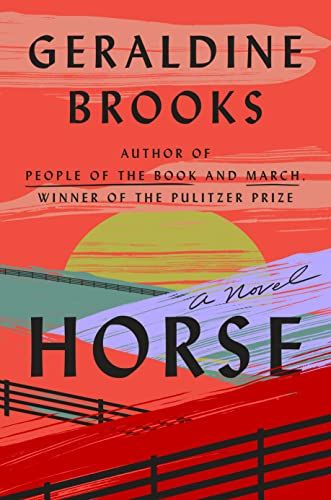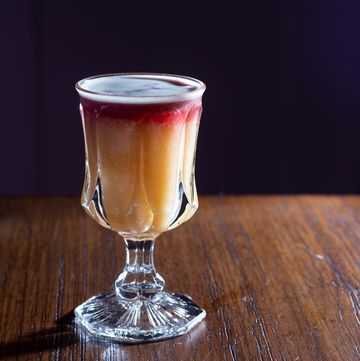Welcome to the VERANDA Sip & Read Book Club! Each month, we dive into a new book and offer exclusive conversations with the author, along with a perfectly matched cocktail. This month's pick is Geraldine Brooks' Horse, a stirring look at the famous racehorse, Lexington, and the dark truth about the racing industry. Get caught up on our past book club selections here.
Art historian Theo Northam didn't think much of the discarded equestrian painting he found in pile at his neighbor's home. Needing a subject for his latest article for Smithsonian Magazine, he decides to research the origins of the work. However, what he discovers leads to a much darker revelation about not only the subject of the work but America's racehorse industry. Pulitzer Prize winner Geraldine Brooks returns to the literary scene with a heart-stopping story based around record-breaking racehorse Lexington and his groom, Jarret Lewis. Below, Brooks details how she discovered the truth about Lexington's rise to the top and the writing lessons she learned along the way.
How did you learn about Lexington and more importantly his groom, Jarret Lewis?
More From Veranda

Geraldine Brooks: I learned about Lexington quite by chance, at a lunch, when I overheard an official from the Smithsonian Institution, who was seated nearby, telling his companion about transporting the skeleton of this famous 19th-century racehorse from Washington, D.C. to the International Museum of the Horse in Kentucky. As I began to research the remarkable life of the horse, I learned that he had a Black groom, named Jarret, who cared for him, and who had been depicted with him in a portrait.
What was the research like for this novel?
GB: Research was extensive. Everything from the modern science of osteological preparation, to the role of highly skilled enslaved Black horsemen prior to the Civil War, to the modern art movements of the mid-20th century. It took me into the labs of the Smithsonian, to the backstretches of modern racecourses and breeding sheds, as well as into archives full of century-and-a-half old newspapers.
What was it like to write between three different narratives and piece them together into one novel?
GB: I developed the three narratives separately. One in the near present, one in mid-20th century New York City, and of course, the spine of the book, the story of the horse himself in the mid-19th century before, during, and after the Civil War. It took me quite a long time to understand how I would braid these three strands, and it was only as I wrote that I gradually came to understand where those connections had to be.
While this story is very much about horseracing, it is also a book addressing race in America. When was the moment you realized this story is no longer just about the legacy of Lexington, but also about the dark truth of horseracing in the pre-Civil War South?
GB: I understood very quickly the integral role of Black horsemen in the success of this stallion. I had a choice to make then: to do my best to write about those men, with all the responsibilities that come when a white writer attempts to create Black characters, or to center the story on the white owners and avoid potential controversy. I realized immediately that it wasn’t actually a choice. I was not going to erase the contributions of the Black horsemen, and if I was going to write about this horse, I would have to write about racism, not just in the past, but in the present as well because that story isn’t over.
What do you hope people learn after reading this book?
GB: I hope they will enjoy the story of this great horse and the people who loved and cared for him, and I hope they will learn, as I did, about how instrumental plundered Black labor and skill were in the creation of wealth and prestige for white horse owners, as in so many other economic endeavors in our country’s history.
After finishing the novel, what character did you miss the most?
GB: I don’t have to miss them, because I keep on thinking about them as if they were living friends.
Are you a lover of horses yourself?
GB: I had my first riding lesson at the age of 53 (which I don’t recommend—start earlier when you still bounce), and I have been horse-crazy ever since. I am lucky to have a mare, Valentine, and I spend time with her every day.
Sarah DiMarco is the Assistant Editor at VERANDA, covering all things art, design, and travel, and she also manages social media for the brand.













